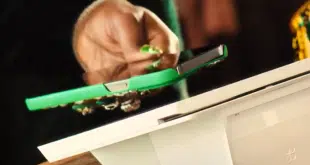A typical household makes from four to a dozen recurring payments monthly. In addition, households pay for groceries and clothing and other things at points of sale and online.
In the future, we may all commute using app-based ride services. But these overwhelmingly draw the passenger’s payment from a credit or debit card, and it’s usually one issued by a bank. Bank-owned Zelle has achieved around three times Venmo’s volume in one-fifth the time.
Need to send money instantly to someone, anywhere? Visa Direct moves the money from any bank-issued debit card to any other bank-issued debit card. The Clearing House’s under-15-second, good-funds payments model moves money only from a regulated bank account to another regulated bank account.
A missile’s trajectory models what happens with most new payment schemes’ volume. The rate of change in a missile’s altitude shoots rapidly from inches per second to miles per second. But then the curve flattens out. A similar pattern occurs in the gains in volume of payments made by a new payment method. At first, only a few payments are processed per hour. Then hundreds to thousands to tens of thousands per hour. Then it slows.
The important statistic to monitor is the rate of change of the rate of change in volume—the second-order derivative that would signal success. The compounding of gains after launch rarely persists for either new missiles or new payments technologies. For missiles, the reason is gravity. For payments, it is demand.
It’s All About Demand
Only a fixed number of payments are going to get made, simply because there are only so many payers, and each needs to pay for only a fixed number of units of shelter or food or transportation or mobile-phone games. This is one reason smart developers of new ways to pay try to launch their product as the way to pay for something entirely new, something that simply was never paid for before, like multiplayer-game power boosters or minutes of virtual-reality streaming.
Just as a ride-sharing payment app doesn’t increase the aggregate demand for miles of travel, new payment schemes can seldom increase payments activity by an amount large enough to keep them growing at high rates over the long term.
The Competition for Payments Innovation
Banks are hardly newcomers to the game of providing new ways to pay: MICR, check-image processing, ACH, credit cards, debit cards, and now card-to-card instantaneous payments and the R3 consortium’s global blockchain payments system were all invented or absorbed by banks.
Banks are very aware that a new way to pay benefits the bank only to the degree that it doesn’t take away too many payments that would otherwise have been made using an existing, fully depreciated, bank-owned payment method. Adding a door to the bank won’t make more people walk in.
As with cars in the automotive industry, letting an existing payment method’s inventory of potential users clear before introducing a new one is almost as important as the invention of the new payment technology itself.
Hank Koehn, the first futurist ever hired by a bank, once calculated that his bank could make more money selling personal computers than inventing ways to use them for payments. His point wasn’t that the bank should start retailing PCs, but that it should wait until a user base existed before offering PC-based payments.
Two Predictions
In the future, we will pay using fantastically innovative technologies that will connect a payer’s account at a regulated financial institution to a payee’s account at another regulated financial institution.
While many of the core technologies may initially be pioneered by non-bank fintech innovators, the overwhelming majority will either have been invented by regulated financial institutions or will have been taken over by regulated financial institutions. In both cases, the payments’ starting and ending points will be bank accounts.
Second, fintechs could change the way one very large group of people pay. It’s the tens of millions who need to make and receive payments but have no bank and no method other than cash for making these payments.
—George Warfel • GWarfel@haddonhillgroup.com





